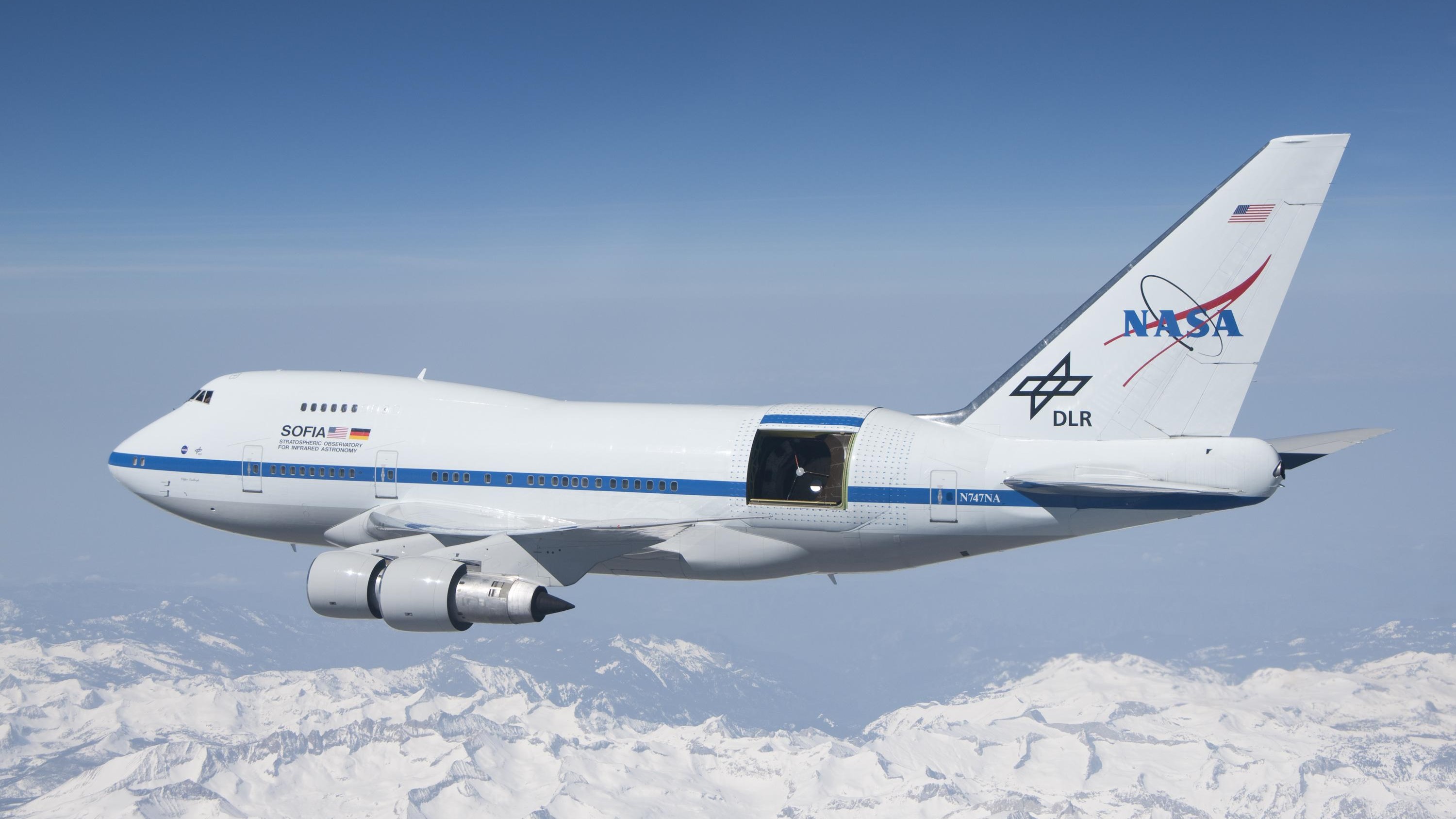NASA's flying SOFIA observatory is in New Zealand for the last time

After eight years of science work, jet-turned-telescope SOFIA is preparing to take its final flight. But before its end of service on Sept. 30, the flying observatory is taking one last trip abroad.
Stratospheric Observatory for Infrared Astronomy (SOFIA) is a joint project between NASA and the German Aerospace Center (DLR) and consists of a modified Boeing 747 aircraft with a special door built into its side that opens mid-flight to reveal observational instruments. Now, SOFIA is spending its final international deployment in Christchurch, New Zealand, where it has spent six previous deployments.
"We are thrilled to be returning to Christchurch to continue to study and discover the infrared universe," Naseem Rangwala, the SOFIA project scientist, said in a statement.
Related: A photo tour of NASA's SOFIA flying observatory
Because SOFIA can fly above 40,000 feet (12,000 meters) in altitude, it can make clearer infrared observations than ground-based telescopes. In particular, the telescope flies above 99% of the atmosphere's water vapor, which can interfere with infrared imaging.
Although SOFIA is usually based in Palmdale, California, at NASA's Armstrong Flight Research Center, where it typically takes four overnight observation flights per week, it travels internationally to observe different parts of the sky. One of its most frequent destinations is Christchurch.
SOFIA's original mission lasted just five years, although its anticipated lifespan was 20 years. But based on the most recent astrophysics decadal survey-- a document published by the U.S. National Academies of Sciences, Engineering, and Medicine that suggests research priorities and crunches budgets for the next decade — NASA and DLR decided to end the SOFIA program on Sept. 30. Its high operational costs, to the tune of $85 million a year, simply didn't provide enough return on the investment, the panel behind the report determined.
Breaking space news, the latest updates on rocket launches, skywatching events and more!
During its final stint in Christchurch, SOFIA will make an estimated 32 flights with two main science goals. The observatory will use its High-resolution Airborne Wideband Camera Plus (HAWC+) instruments to map the Milky Way galaxy's magnetic fields; it will also use the German Receiver for Astronomy at Terahertz Frequencies (GREAT) to study stellar feedback, or the interaction of stars with their local environment.
"We are committed to delivering a strong finish for this unique astrophysics mission, from a place of strength and pride, by giving our scientific community as much data as possible from the Southern Hemisphere," Rangwala said.
Data from SOFIA's flights in New Zealand will be made available in NASA's public archives.
Follow Stefanie Waldek on Twitter @StefanieWaldek. Follow us on Twitter @Spacedotcom and on Facebook.

Space.com contributing writer Stefanie Waldek is a self-taught space nerd and aviation geek who is passionate about all things spaceflight and astronomy. With a background in travel and design journalism, as well as a Bachelor of Arts degree from New York University, she specializes in the budding space tourism industry and Earth-based astrotourism. In her free time, you can find her watching rocket launches or looking up at the stars, wondering what is out there. Learn more about her work at www.stefaniewaldek.com.
